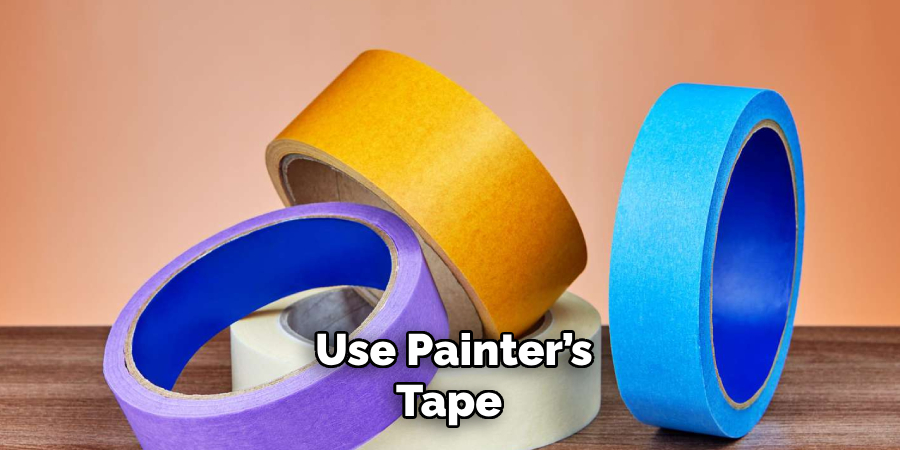Are you looking to give your old steel building a new look? You could just build a new one and want to add some color.
How to paint a steel building can not only enhance its appearance but also provide essential protection against rust and corrosion. Whether you’re looking to freshen up the exterior of your steel building or preserve its structural integrity, painting is a crucial maintenance task that requires careful planning and execution. In this guide, we will walk you through the step-by-step process of painting a steel building, from preparing the surface to choosing the right paint and applying it effectively.

Get ready to give your steel building a vibrant, long-lasting finish that will stand the test of time.
What Will You Need?
Before starting, ensure you have all the necessary tools and materials. Here’s a list of things you’ll need to get the job done:
- Pressure washer
- Paint scraper or wire brush
- Sandpaper (medium and fine grit)
- Rust inhibitor/primer
- Paint rollers and brushes
- High-quality paint suitable for steel buildings
- Painter’s tape
- Drop cloths or plastic sheeting
Once you have all your supplies, it’s time to get started!
10 Easy Steps on How to Paint a Steel Building
Step 1: Clean the Surface
The first step is to ensure that the surface of your steel building is clean and free from any dirt, debris, or loose paint. Use a pressure washer to remove any stubborn grime or dust buildup. If there is any remaining peeling paint, use a paint scraper or wire brush to remove it. Remember to wear protective gear, including gloves and goggles, when working with a pressure washer.
Step 2: Sand the Surface
Sanding the surface of the steel building is essential to create a smooth and even base to which the paint can adhere. Use medium-grit sandpaper to remove any remaining paint residue, rough spots, or minor rust. Once the surface feels smooth, use fine-grit sandpaper to refine the finish further. Pay close attention to areas with visible rust, as obliterating rust is critical to prevent further corrosion. After sanding, clean the surface with a clean cloth to remove any dust or debris left behind. This ensures the primer and paint will bond properly to the steel. Additionally, if your steel building has never been painted, you may need a rust inhibitor or primer specifically designed for bare metal surfaces.

Step 3. Apply a Rust Inhibitor
Once the surface is clean and smooth, it’s time to protect the metal from rust. Apply a high-quality rust inhibitor to areas prone to corrosion or previously affected by rust. This step is essential for enhancing the longevity of your paint job and preventing future rust damage. Use a brush or roller to coat the surface with the rust inhibitor evenly, and allow it to dry completely according to the manufacturer’s instructions before priming. Remember to wear gloves and work in a well-ventilated area, as rust inhibitors can emit strong fumes.
Step 4: Apply a Primer
A primer is the foundation for your paint and ensures better adhesion to the steel surface. Choose a primer specifically formulated for metal surfaces, providing additional protection against rust and weathering. An even primer layer is applied across the entire surface using a roller or paint sprayer. Be sure to work in sections and use a brush for hard-to-reach areas or edges. Allow the primer to dry for the recommended time on the product label, typically several hours. Skipping this step can lead to an uneven finish or shorter paint lifespan, so take your time to do it thoroughly.
Step 5: Choose the Right Paint
Selecting the correct type of paint is critical for the success of your project. Opt for a high-quality paint specifically designed for metal surfaces, such as acrylic or oil-based paints, that offer durability and weather resistance. If the steel building is exposed to harsh weather conditions, consider using industrial coatings to protect against UV rays, moisture, and extreme temperatures. Also, choose a color that complements the building’s surroundings or stands out to match your personal preference. Proper paint ensures a lasting and vibrant finish that won’t chip or fade quickly.
Step 6: Protect Surrounding Areas
Before you start painting, take time to protect any areas you don’t want to get paint on. Use painter’s tape to cover trim, edges, or hardware, and lay down drop cloths or plastic sheeting to cover the ground and nearby objects. This step helps ensure a clean and professional-looking result while saving you the hassle of cleaning up accidental spills or splatters later. Don’t forget to remove any obstructions or decorations from the building’s exterior, such as signs or light fixtures.

Step 7: Apply the First Coat of Paint
Once everything is prepped, begin applying the first coat of paint. Use a paint sprayer or roller for large, flat surfaces and a brush for edges and more minor details. Start from the top of the building and work your way down to avoid dripping onto freshly painted areas. Apply the paint in smooth, even strokes, and avoid overloading your applicator to reduce the risk of drips or uneven coverage. Take your time to ensure the first coat provides a solid foundation for the final result.
Step 8: Allow the Paint to Dry
After applying the first coat, allow it to dry thoroughly according to the paint manufacturer’s instructions. Drying times can vary depending on the type of paint used, humidity, and temperature. Avoid rushing this step, as painting over a wet or tacky surface can lead to smudges, streaks, or uneven layers. Ensure the building has adequate ventilation to speed up the drying process and maintain air circulation.
Step 9: Apply Additional Coats
Once the first coat has dried, inspect the surface to determine if additional coats are needed. Most steel buildings require at least two coats of paint for a richer color and better coverage. Repeat applying smooth, even strokes, and allow each coat to dry completely before adding the next. Multiple coats will enhance the appearance and provide extra durability and protection for the steel. Use a paintbrush for touch-ups on any missed spots or hard-to-reach areas.

Step 10: Perform a Final Inspection
After the final coat has dried, carefully inspect the entire building for any missed spots, runs, or uneven areas. Touch up these imperfections with a brush to ensure a flawless finish. Remove any painter’s tape and drop cloths, ensuring no paint has seeped onto protected surfaces. Properly dispose of leftover materials and clean your tools for future use. Once everything is complete, admire the fresh, polished look of your newly painted steel building!
By following these steps, you can achieve a professional-level paint job that improves the visual appeal of your steel building and safeguards it against the elements for years to come.
5 Additional Tips and Tricks
- Work During Optimal Weather Conditions: Weather can significantly affect the outcome of your paint job, especially when painting steel buildings. Choose a day with mild temperatures, low humidity, and no precipitation in the forecast.
- Use High-Quality Tools: Investing in high-quality brushes, rollers, and sprayers can significantly improve the final appearance of your paint job. Cheap tools often result in uneven application, bristle loss, or streaky finishes. A professional-grade paint sprayer, in particular, can save time and effort while ensuring a smooth and uniform coat.
- Don’t Forget About Safety: Proper safety precautions are essential when handling paint, rust inhibitors, and other chemicals. Wear gloves, goggles, and a mask to protect yourself from fumes and splatters. If working at heights, ensure you use stable ladders or scaffolding and follow all safety guidelines to prevent accidents.
- Test Paint Colors Before Starting: Before committing to an entire paint job, test your chosen paint color on a small, inconspicuous building section. Doing so will help you confirm that the color complements the structure and surrounding environment as intended.
- Maintain the Paint Job Over Time: Conduct regular maintenance to keep your painted steel building looking great. Clean the surface periodically to remove dirt, grime, and mildew, which can cause the paint to deteriorate over time.

By considering these additional tips and tricks, you can further elevate the quality of your paint job and ensure the steel building remains well-protected and visually appealing for years to come.
Conclusion
How to paint a steel building can transform its appearance, enhance its durability, and provide long-lasting protection against the elements.
By following the steps outlined in this guide, you can ensure a successful paint job that stands the test of time. Remember to thoroughly prepare the surfaces, choose high-quality paint and primer, and apply the coats evenly for a smooth and vibrant finish. Prioritize safety by using the appropriate protective gear and following safety guidelines. Additionally, test paint colors before starting and conduct regular maintenance to preserve the integrity and visual appeal of the painted surface.
With these considerations in mind, you’ll be able to achieve a professional-looking paint job that enhances the aesthetics and longevity of your steel building.
Edmund Sumlin is a skilled author for Metal Fixes, bringing 6 years of expertise in crafting a wide range of metal fixtures. With a strong background in metalwork, Edmund’s knowledge spans various types of fixtures, from decorative pieces to functional hardware, blending precision with creativity. His passion for metalworking and design has made him a trusted resource in the industry.
Professional Focus:
- Expert in Metal Fixtures : Edmund aesthetic specializes in creating durable and innovative metal fixtures, offering both appeal and functionality. His work reflects a deep understanding of metalworking techniques and materials.
- Sustainability Advocate : He is dedicated to using sustainable practices, ensuring that every fixture is crafted with eco-friendly methods while maintaining high-quality standards.
In his writing for Metal Fixes, Edmund provides valuable insights into the latest trends, techniques, and practical advice for those passionate about metal fixtures, whether they are professionals or DIY enthusiasts. His focus on combining artistry with engineering helps others discover the true potential of metal in design.


